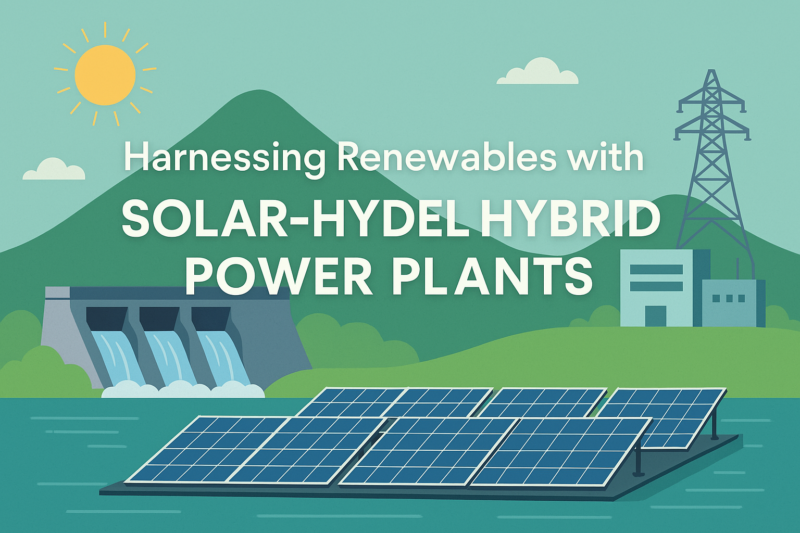India stands at the threshold of a clean energy revolution. As we aim for ambitious renewable energy targets and seek efficient, scalable solutions to our growing power demands, a compelling opportunity lies in plain sight—integrating floating solar photovoltaic (PV) systems with existing hydroelectric power infrastructure.
This concept is not just visionary—it’s practical, proven, and tailor-made for India’s large hydropower assets. I had written a brief note about this potential back in 2013 (original blog post here). What follows is a detailed and timely call to action.
Why Solar-Hydel Hybrid Power Plants Make Sense for India
1. Maximizing Existing Infrastructure
India already has massive hydroelectric power plants with vast reservoirs. Floating solar PV arrays can be deployed on these reservoirs, allowing us to double down on clean energy generation without acquiring new land or building new transmission infrastructure.
2. Solving the Storage Puzzle with Pumped Hydro
Instead of relying on expensive battery storage, we can use excess solar power during the day to pump water back into the reservoir, effectively storing energy by increasing the water’s potential energy. This enables us to dispatch electricity reliably during peak hours—even after the sun sets.
3. Reducing Evaporation and Enhancing Water Management
Solar panels floating on reservoirs reduce water evaporation, a critical advantage in water-scarce regions. This means cleaner energy and smarter water conservation—two national priorities addressed together.
4. Improved Grid Stability
Hydropower provides stable, dispatchable power. Combining it with intermittent solar ensures a balanced, smooth power output to the grid. Solar can supplement hydro during the day, allowing reservoirs to conserve water for night-time generation or dry seasons.
Global Success Stories India Can Learn From
- Kela Hydropower Station, China: A hybrid 1 GW floating solar array and 3 GW hydro station generating over 2 billion kWh annually, powering 700,000 homes.
- Alqueva Reservoir, Portugal: Europe’s largest floating solar-hydro project enhancing hydro output and showcasing true hybridization.
If China and Portugal can do it—why not India, where the opportunity is even more scalable?
A Policy Call to Indian Authorities
The Ministry of Power, MNRE, NTPC, and state energy departments must consider a national program to retrofit major hydropower stations with floating solar. Sites like Bhakra, Tehri, Sardar Sarovar, and Nagarjuna Sagar could become flagship hybrid plants. With India’s global leadership in solar manufacturing and hydro capacity, this hybrid model is not just a vision—it’s a strategic imperative.
Net Net..
India doesn’t need to choose between solar and hydro. We can combine them—intelligently, efficiently, and urgently.
Let’s transform our reservoirs into dual-purpose energy hubs. Let’s lead the world in renewable integration. Let’s adopt Solar-Hydel Hybrid Power Plants—today.
Kj [/.] Sreekumar programs computers as a hobby and profession. Into programming from his school days, Sree uses Codemarvels to key in facts and fixes he finds interesting while working on different projects. Some of the articles here give away a few shades of his philosophical leanings too.


